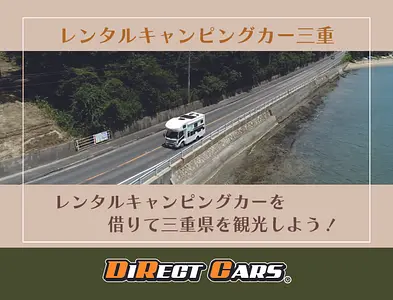Perfect for hiking! You can also be healed by visiting the stone Buddha groups, the view of the mountain top, and the flowers of the four seasons. Introducing the highlights of Kannonyama Park in KameyamaCity
KameyamaCity sekicho The townscape of Sekijuku is also famous, but Kannonzan Park, located to the north of the town, is a spot where people of all ages can enjoy the four seasons, with its nature-oriented hiking trails, stone Buddha tour course, and family-friendly playground. Here are some of its attractions, divided by theme.
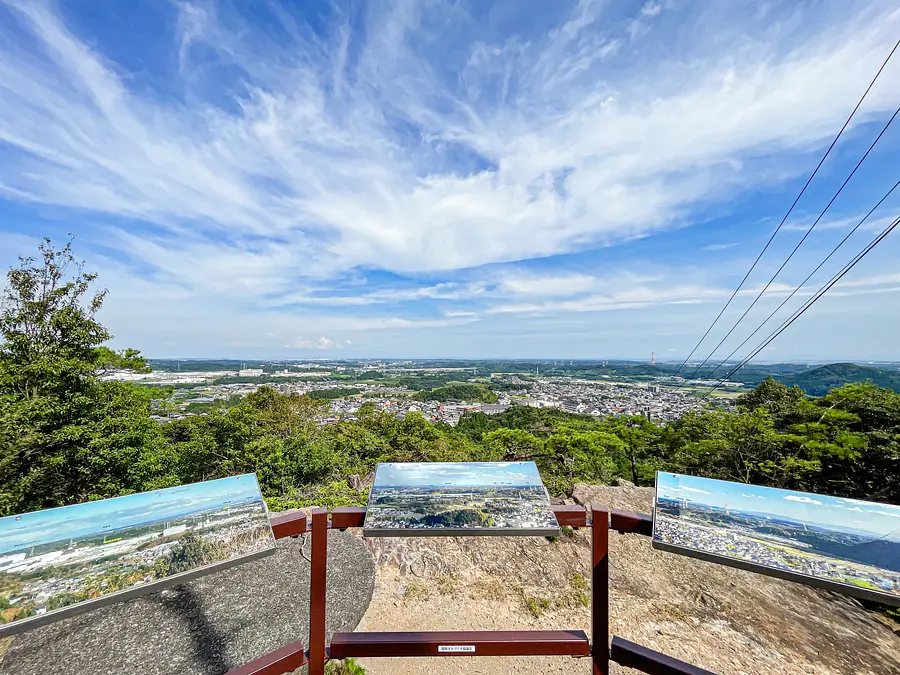
▼Table of contents
- What is Kannonyama Park?
- A park where you can enjoy flowers throughout the year
- If you are bringing small children, please visit the park with play equipment and the steam locomotive exhibit.
- Go to the active mountain climbing course “Athletic Observatory”.
- A course where you can feel the history: ``Historic stone Buddha groups made by master craftsmen'' and ``Kannonyama Observation Deck''
- Other highlights
- Access to Kannonyama Park and parking lot
- How was it?
What is Kannonyama Park?
A large park that takes advantage of nature near Sekijuku
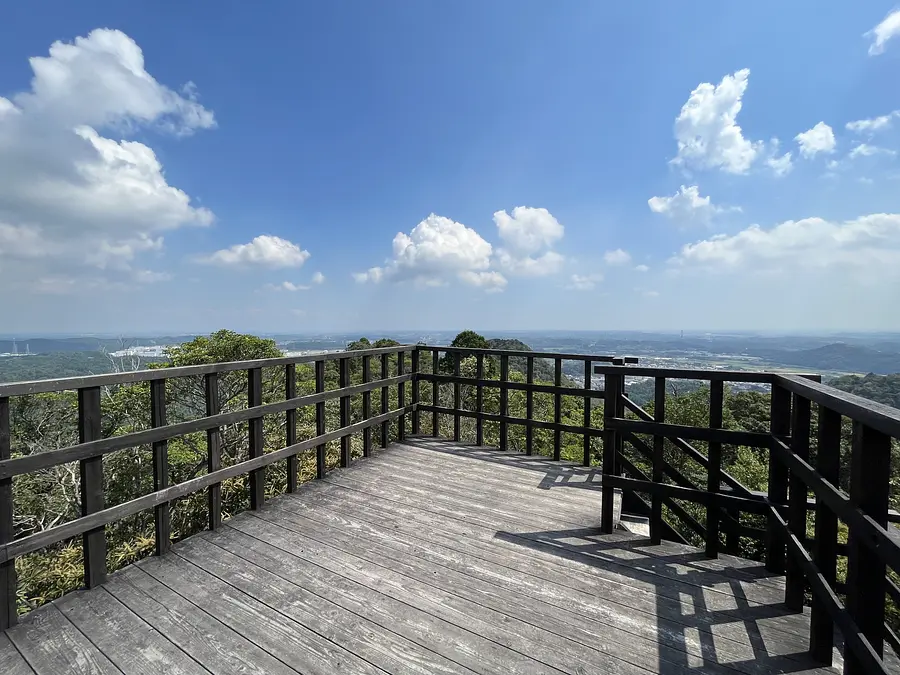
Kannonyama Park is located within Suzuka Quasi-National Park, and is a park where people of all ages can enjoy nature and culture through hiking, admiring seasonal flowers, athletics, and visiting stone Buddha statues. It is also close to Sekijuku, which has been designated as a nationally important preservation district for groups of traditional buildings, making it an attractive tourist spot. The photo is of the Athletic Observatory (Mt. Daikoku).
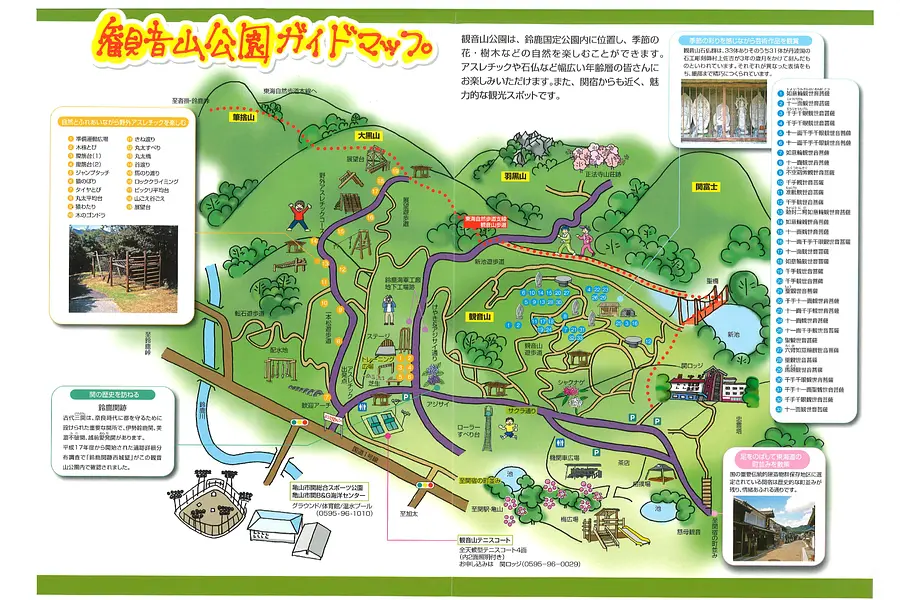
A map of Kannonyama Park in Suzuka Quasi-National Park.
It can be downloaded from KameyamaCity website.
https://www.city.kameyama.mie.jp/docs/2015041500035/file_contents/kannonyamakoen.pdf
A park where you can enjoy flowers throughout the year
At Kannonyama Park, you can enjoy a variety of flowers, autumn leaves, and other scenery. We will introduce them by season.
spring
There are many kinds of flowers that bloom in Kannonyama Park, but the main attraction is the cherry blossoms. From late March to early April, Yoshino cherry trees are planted along the road that runs through the center of the park from the entrance from National Route 25 to Kannonyama Park and Seki Lodge, around the Fureai Plaza, around the tennis court, around the locomotive square, and around the parking lot. is in full bloom. (Flower photos are from KameyamaCity Tourism Association)
It is one of the famous cherry blossom viewing spots in KameyamaCity. The photo shows the cherry blossoms near the parking lot of Seki Lodge.
The photo is along the main road in the park. Rows of cherry blossom trees are spreading. The cherry blossoms surrounding the tennis court near the entrance are also beautiful. The name on the map is "Sakura Street".
early summer
In May, rhododendrons and azaleas are in full bloom on the north side of the locomotive plaza.
autumn
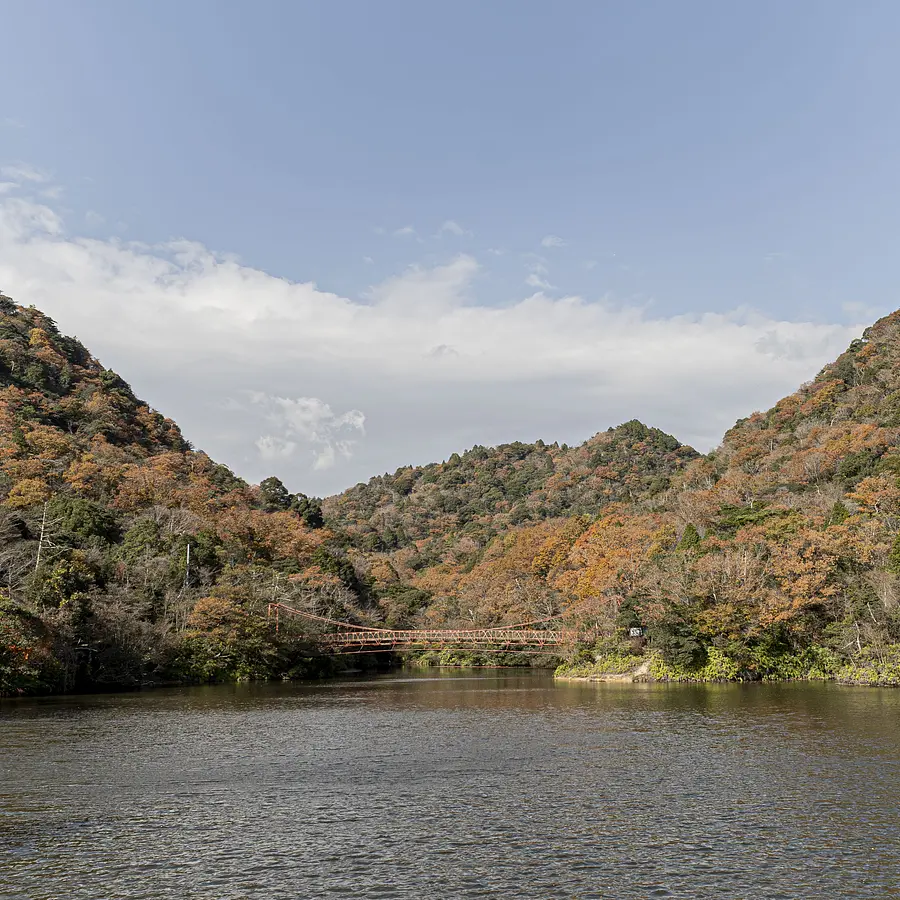
From the second half of November, the entire mountain will turn red. The view of the autumn leaves with Shinike, Hijiri Bridge, and the surrounding Mt. Sekifuji and Mt. Kannon in the background is wonderful. If there is no wind and the lake surface is calm, you may be able to catch some reflections.
winter-spring
Shinike and Hijiri Bridge in the winter snow. A snowy day in January 2024. I also wanted to take photos on days with more snow.
Snowy Shinike promenade. In early summer, it is a pleasant path for forest bathing among the fresh greenery, but in winter, the path is beautiful with snow-covered trees.
There is also a plum orchard with about 40 trees below the steam locomotive park. The best time to see them is from late January to February.
If you are bringing small children, please visit the park with play equipment and the steam locomotive exhibit.
Park with playground equipment
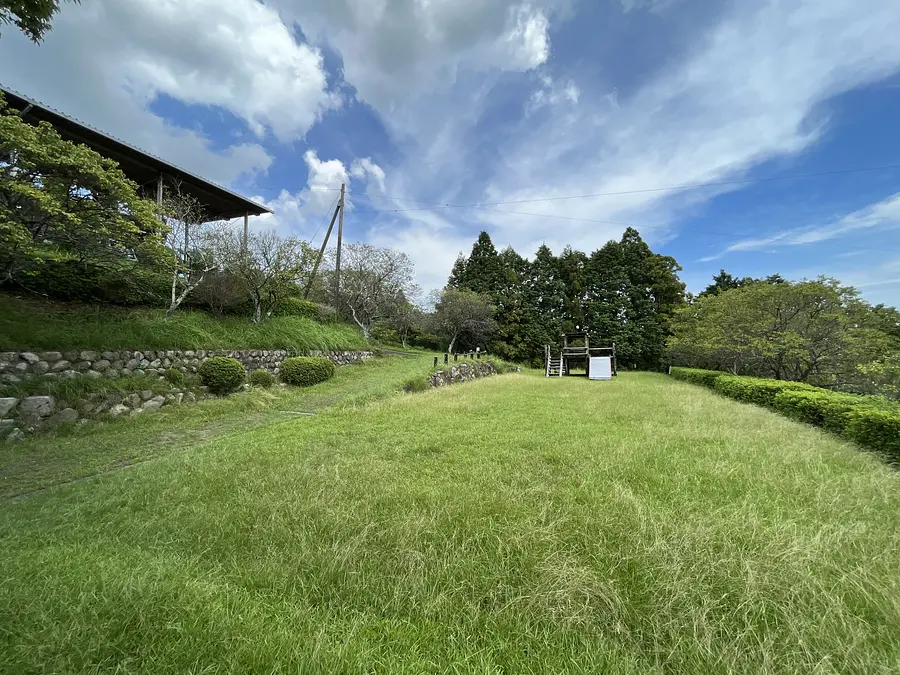
The park, located right from the Kannonyama Park parking lot, has playground equipment for children to enjoy. There are roller slides and a slide that is wider than normal. There's plenty of shade, so it's a good place to bring your lunch. The area is surrounded by cherry blossom trees, so it's perfect for cherry blossom viewing in spring.
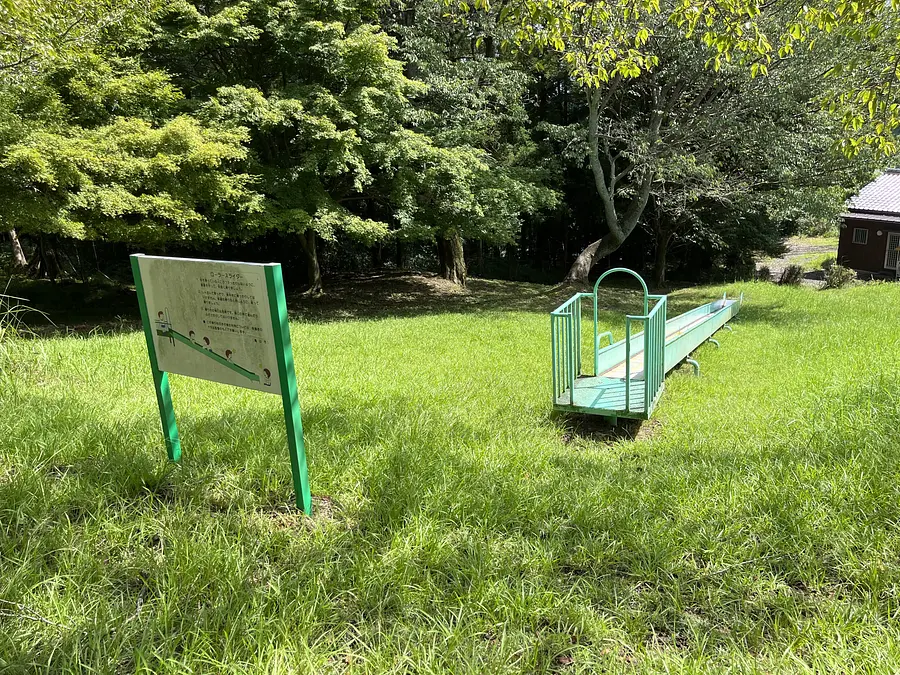
In addition to the regular slide, there is also a roller slide.
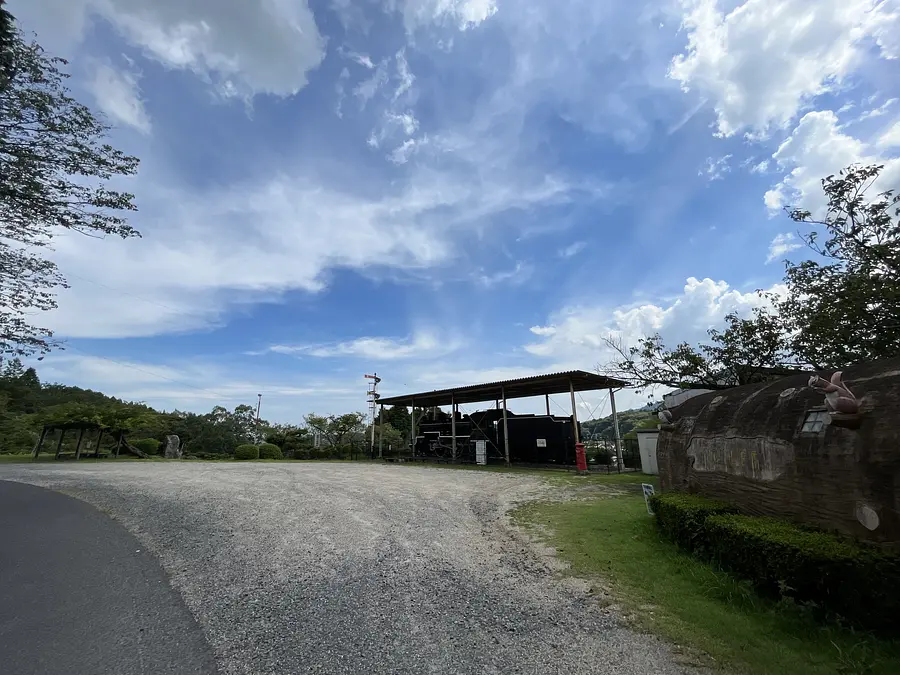
There is a large and free parking lot in front of the SL. Can we park about 20 cars? It's wide.
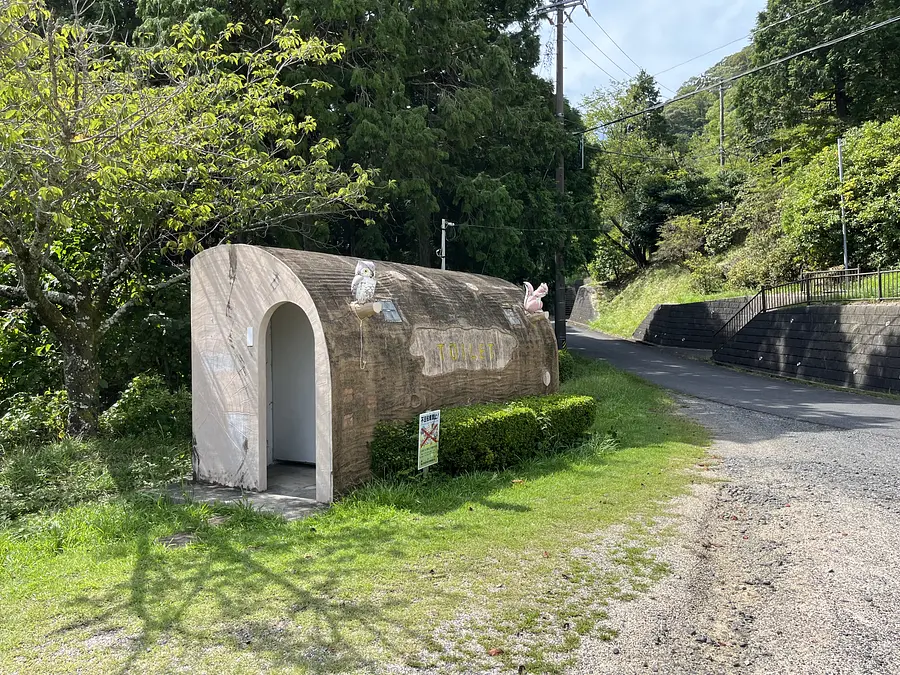
There were separate toilets for men and women. It has a cute shape with owl and squirrel objects. The toilet is a little old, not wheelchair accessible and small.
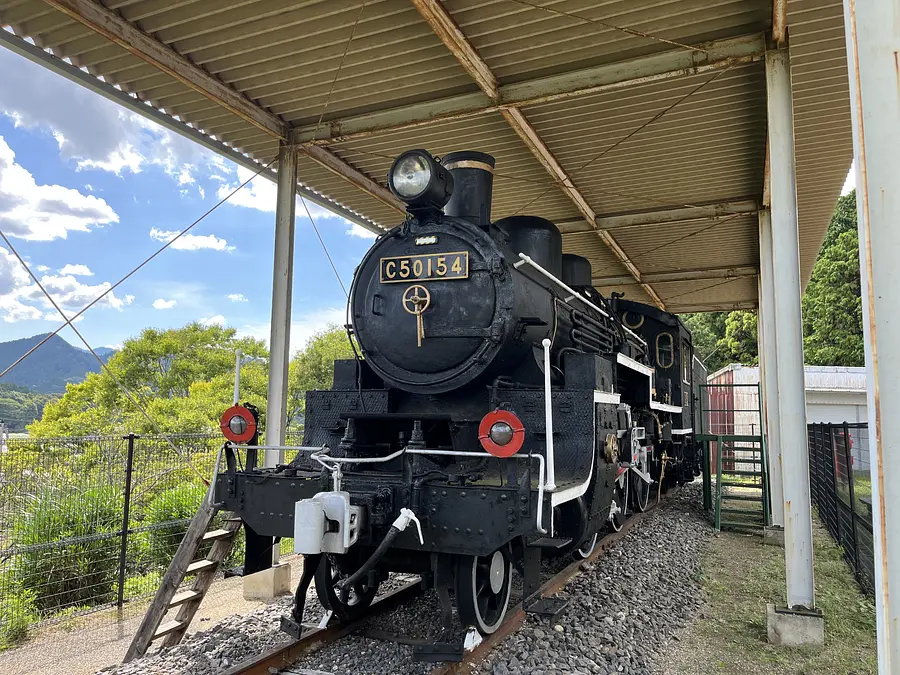
Steam locomotive display
Steam locomotives are popular with both children and adults. Although it is only on display, a steam locomotive manufactured in February 1930 is on static display at Kannonyama Park. After running for 39 years and 4 months and approximately 1.8 million kilometers, it was finally retired at the Kameyama Engine Depot, where it has been preserved statically. There are said to be six C50 models in existence nationwide, and this is one of them.

The preservation society has taken good care of it, and it has been preserved in very good condition.
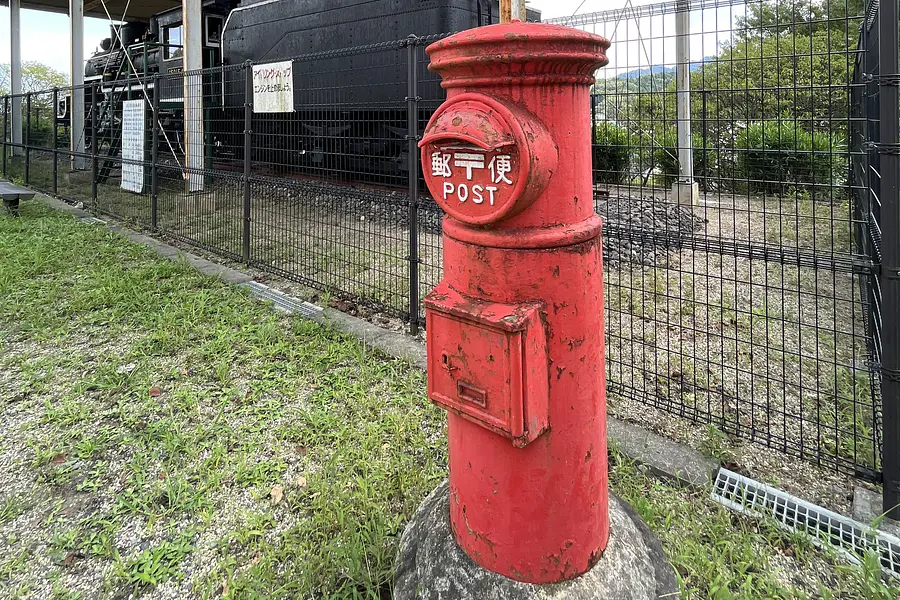
The red mailbox next door also has a nice flavor. Unfortunately, this post does not support collection. The mailbox is blocked.
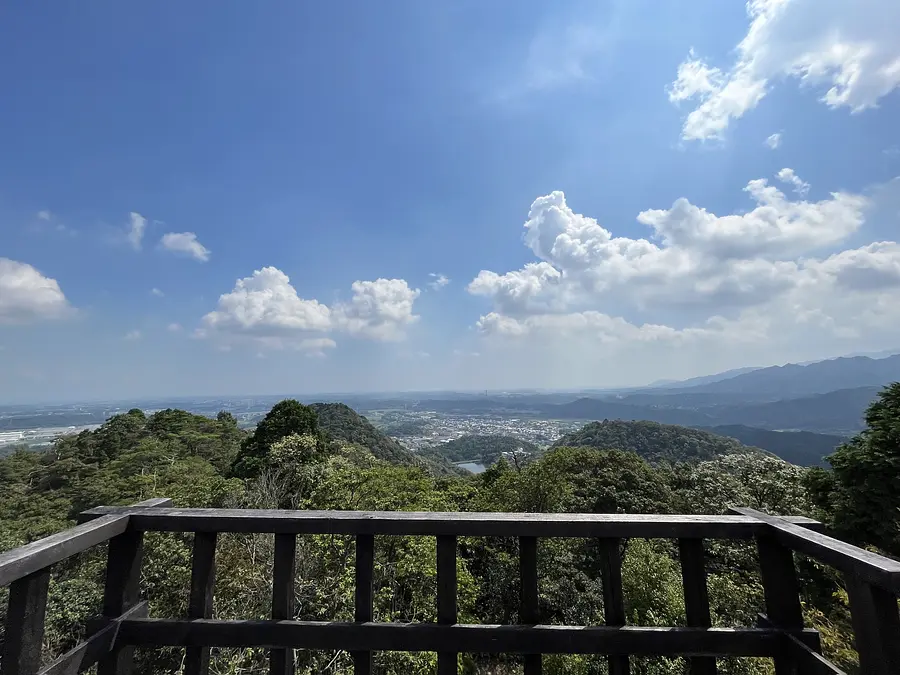
Go to the active mountain climbing course “Athletic Observatory”.
If you are confident in your physical strength, why not try the athletic course that climbs the mountain? There are several athletic playground equipment along the paved mountain trail. At the top, there is an ``Athletic Observatory''. The view from here is amazing.
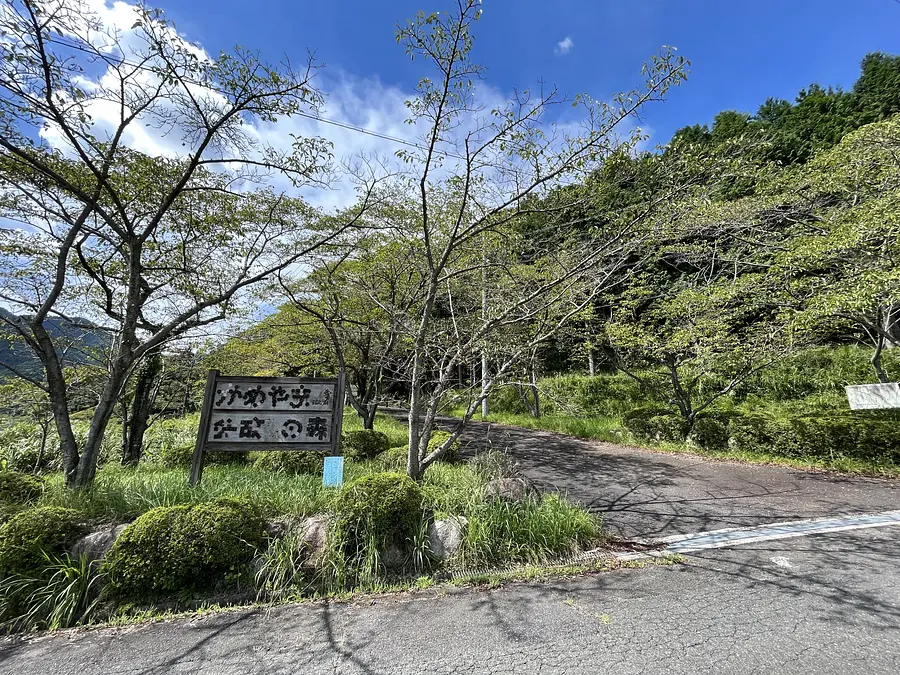
The entrance to the athletic observation deck is next to the tennis court. There is an athletic course in the middle of the course, but some parts are broken and cannot be used (they are closed off with ropes).
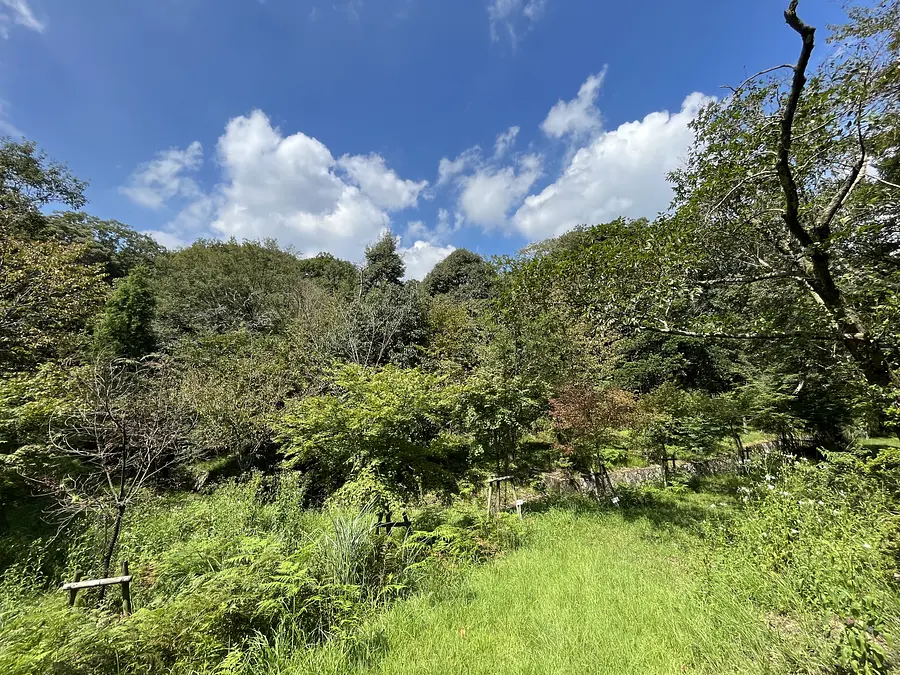
Autumn leaves are also planted along the way, giving you a sense of the season.
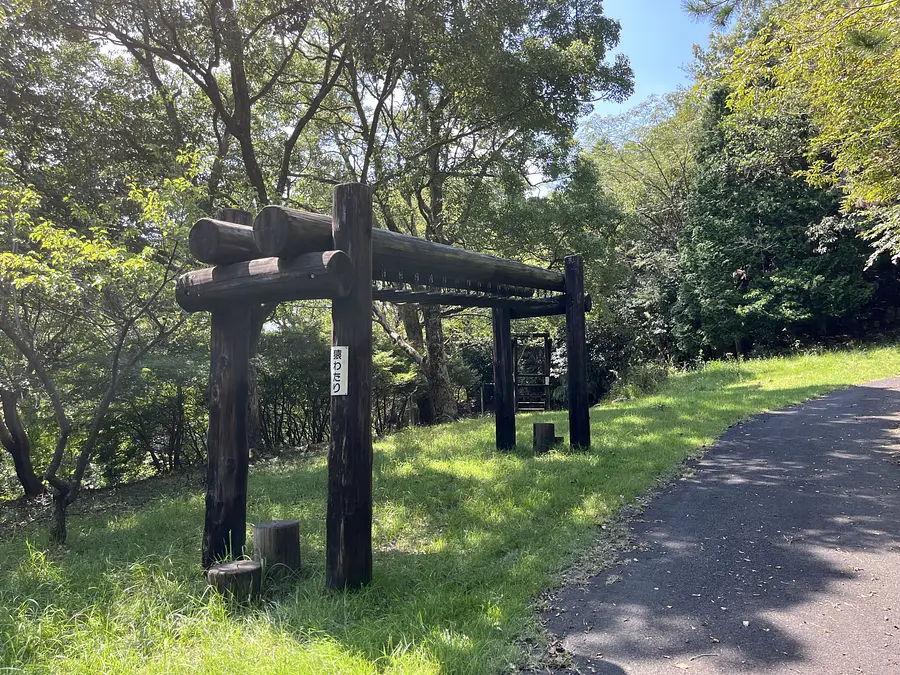
This is the Saruwatari athletic play equipment.
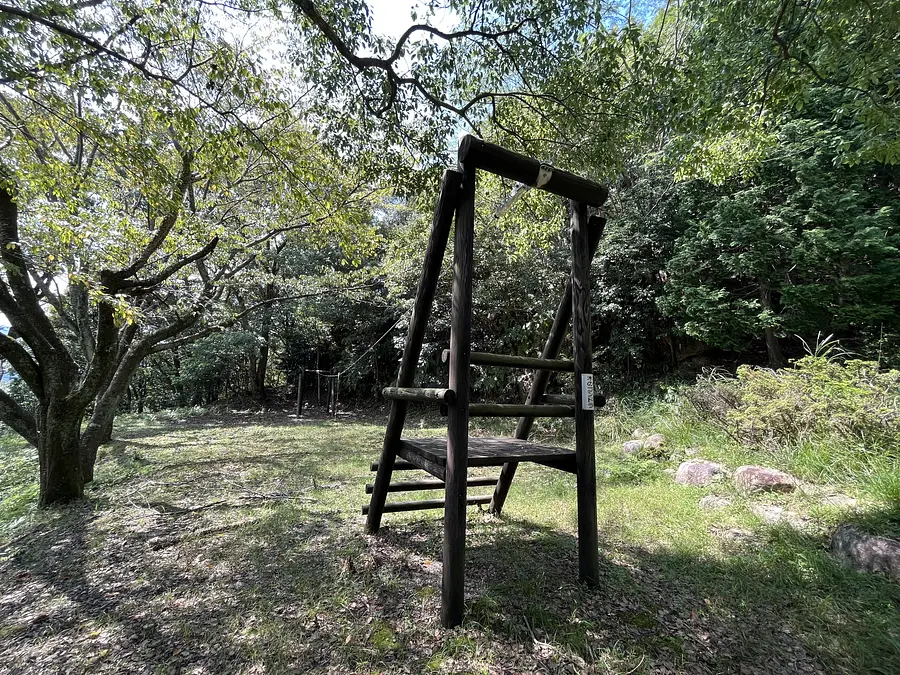
There are tire jumps, rock crossings, and zip lines.
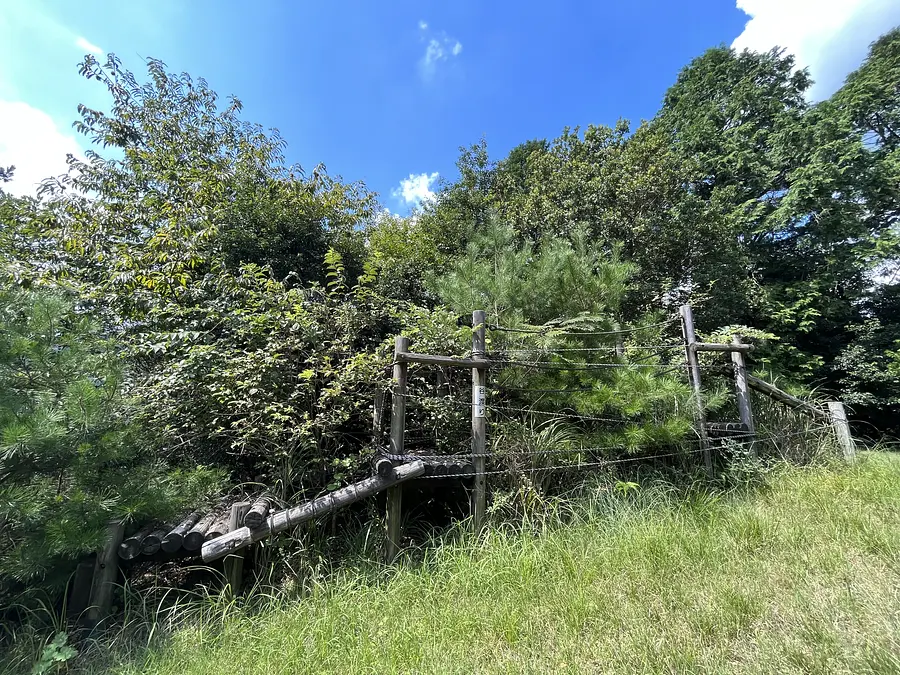
Please note that some playground equipment is closed off with ropes. There were also signs warning of falling rocks in the area.
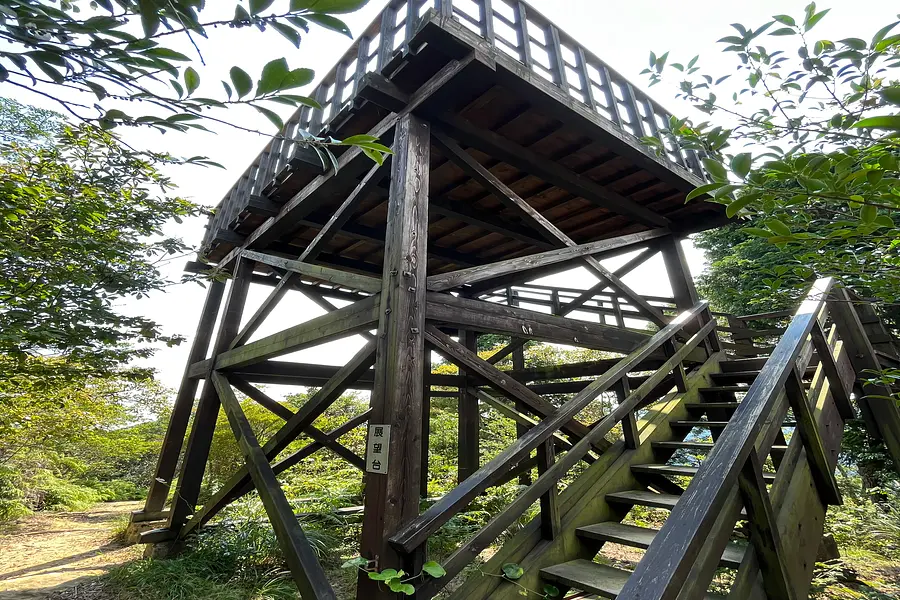
Immediately after merging with the mountain climbing course, you will find Mt. Daikoku's Athletic Observatory.
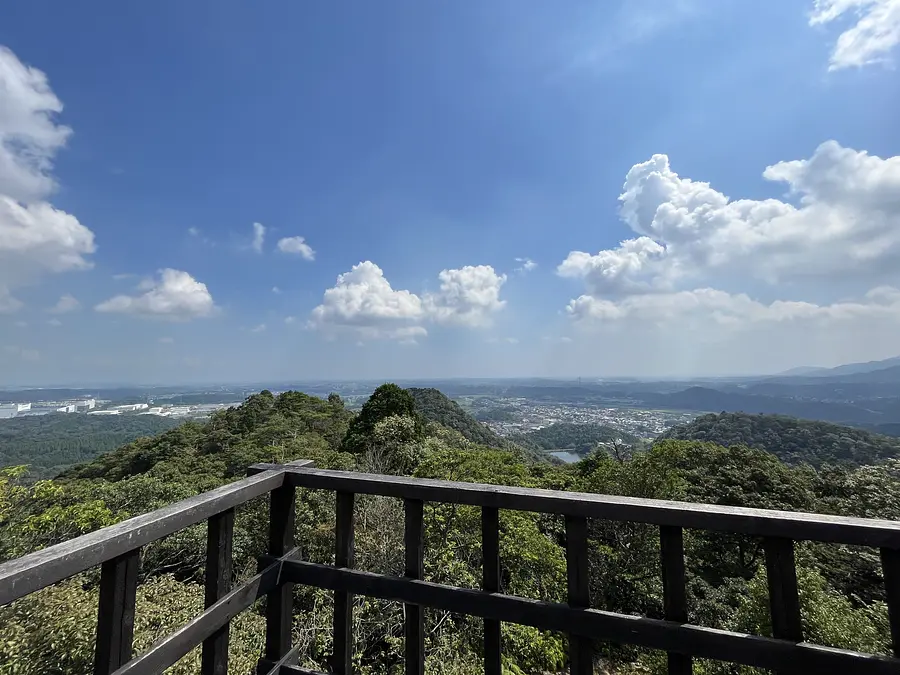
The townscape of Kameyama spreads out below you, and the scenery is breathtaking.
A course where you can feel the history: ``Historic stone Buddha groups made by master craftsmen'' and ``Kannonyama Observation Deck''
About the stone Buddha of Mt. Kannon
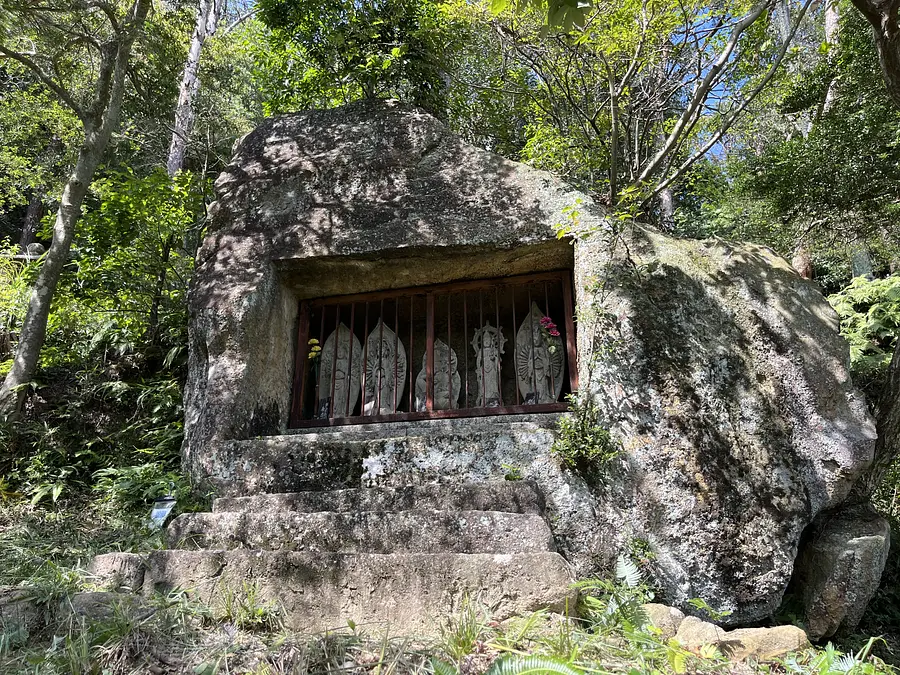
Kannonyama Park is home to a group of 33 Saigoku Thirty-Three Kannon Sacred Stone Buddhas built at the end of the Edo period. Groups of stone Buddha statues are scattered on the mountainside and rock caves of Mt. Kannon, and each one has its own name and origin. Because it was housed in a shrine, it is well preserved, and even after more than 150 years, you can still think about its ancient history while touring the group of stone Buddhas. Of the 33 statues, 31 are said to have been created by Sakichi Murakami, a stone carver from Tamba Province. Tamba (Murakami) Sakichi is a master craftsman who leaves behind stone Buddha statues, guardian dogs, guideposts, etc. in various places. Additionally, each stone Buddha shrine has a QR code attached to it, allowing you to view detailed explanations.

This is the stone statue tour guide map.
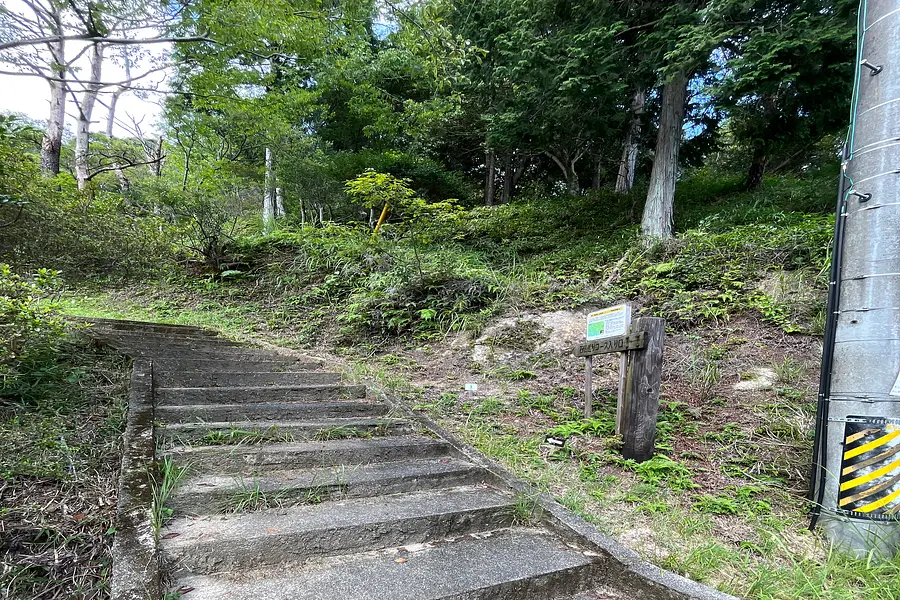
At the beginning of the climb, the path has good stairs, but gradually there are places where the footing becomes difficult. It's better to wear non-slip shoes, although you don't have to wear climbing shoes.
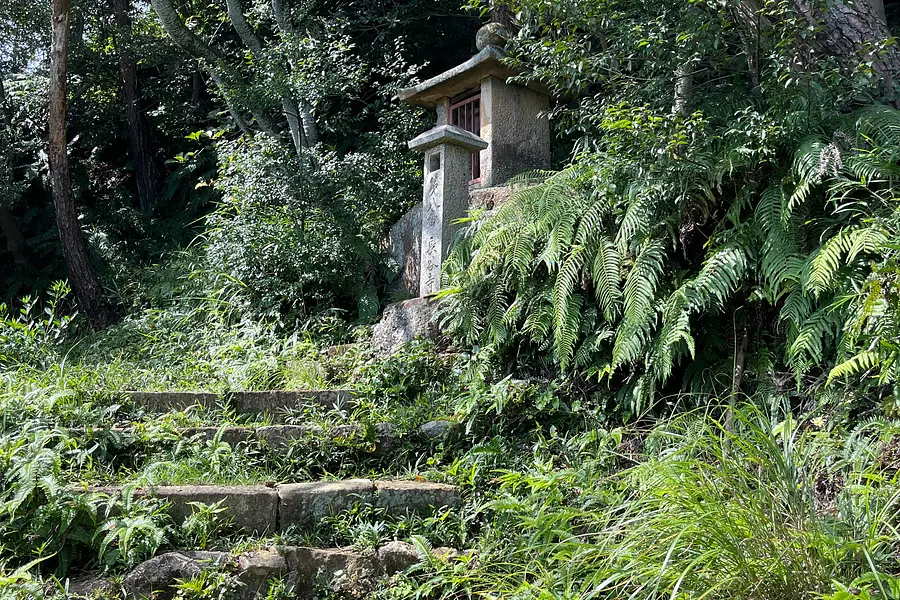
Stone statues are scattered throughout the course.
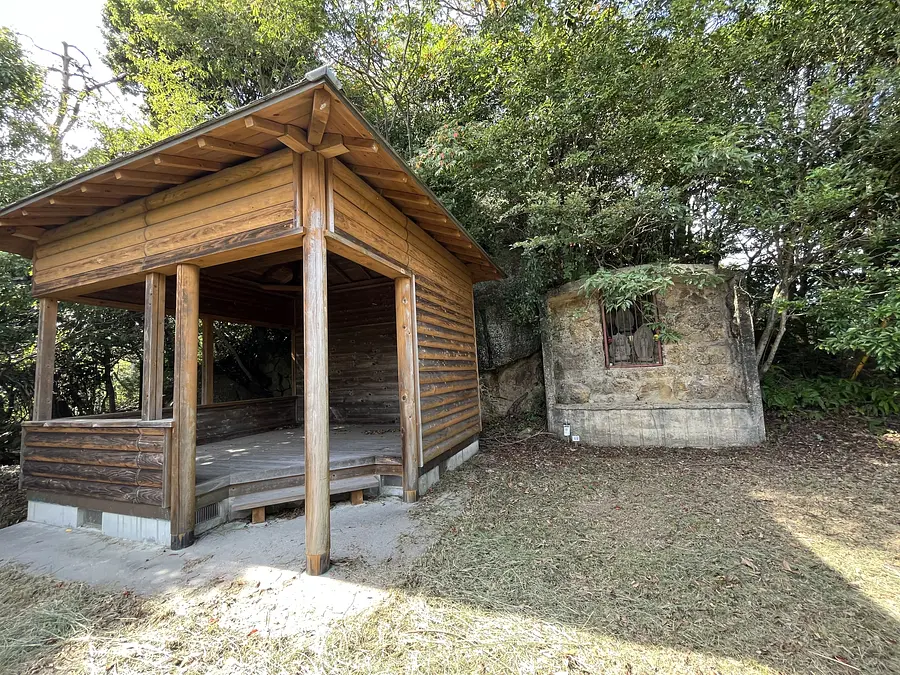
There was a rest area and a stone statue here. It's a series of uphill climbs, so take a break.
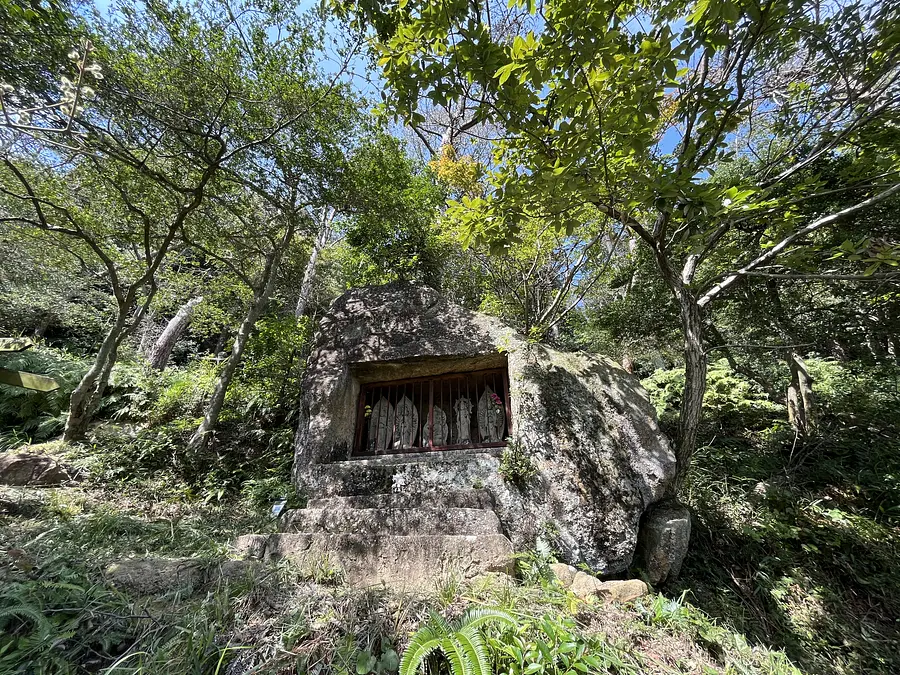
A group of stone statues near the observation deck.
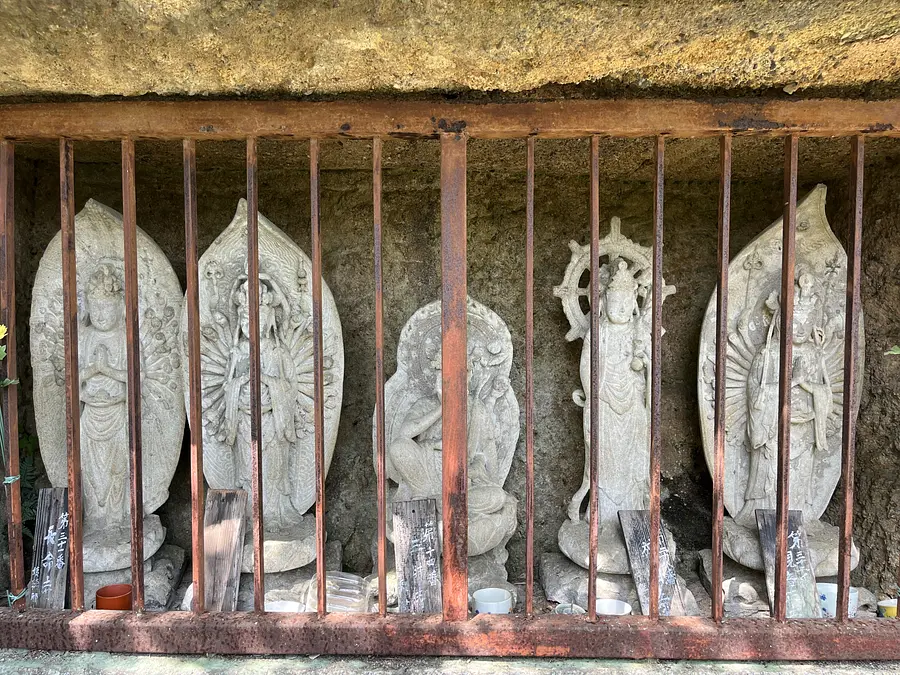
Perhaps because it is inside a stone chamber, it is in good condition.
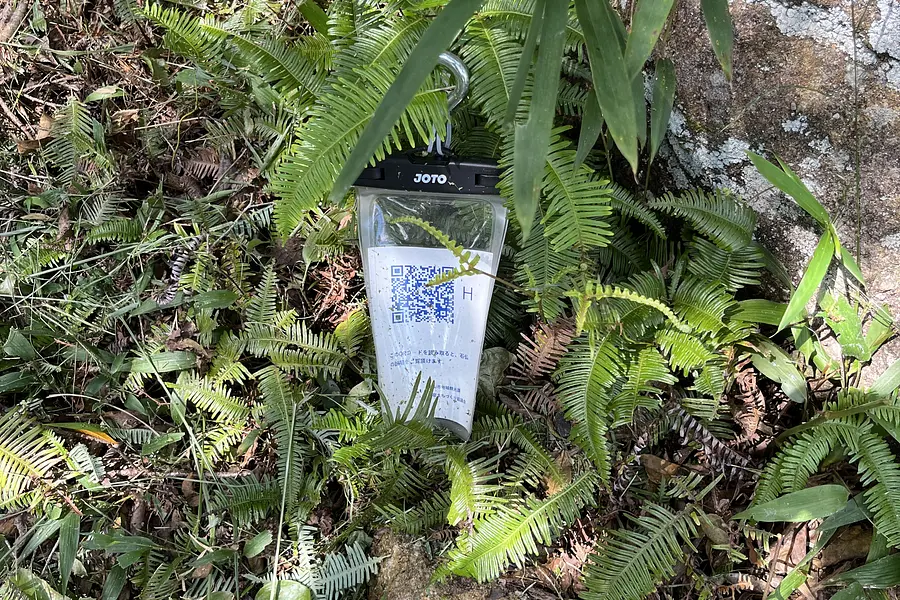
By scanning the QR code, you can see the details of the stone statue.
Kannonyama Observatory (observation deck)
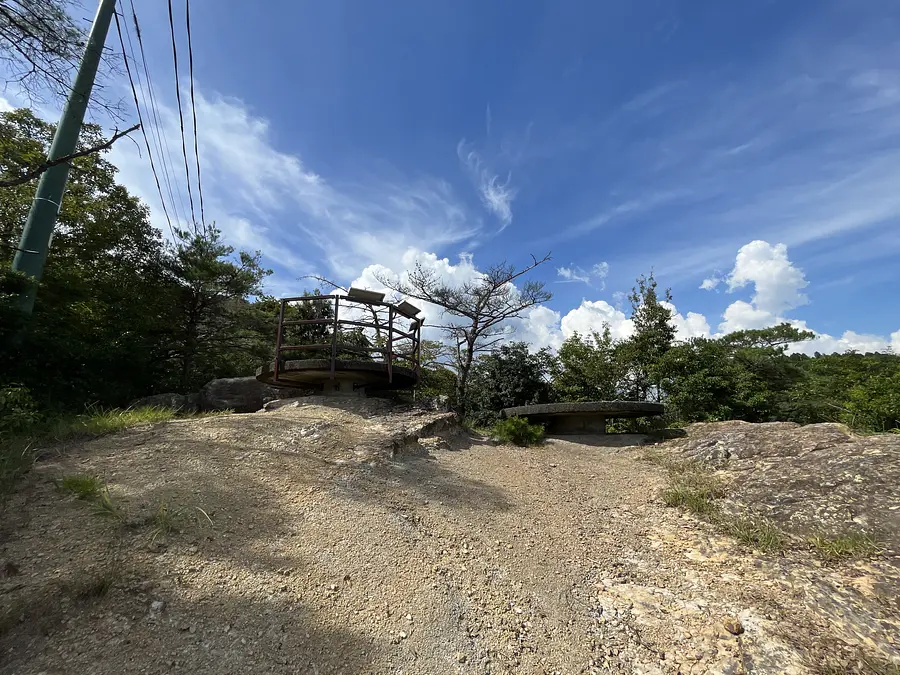
There is an observation deck at the top of the athletic course (Mt. Haguro), but there is also an observation deck also called an observation deck at the top of the stone statue tour (Mt. Kannon). There are two locations, and the higher one has a better view.
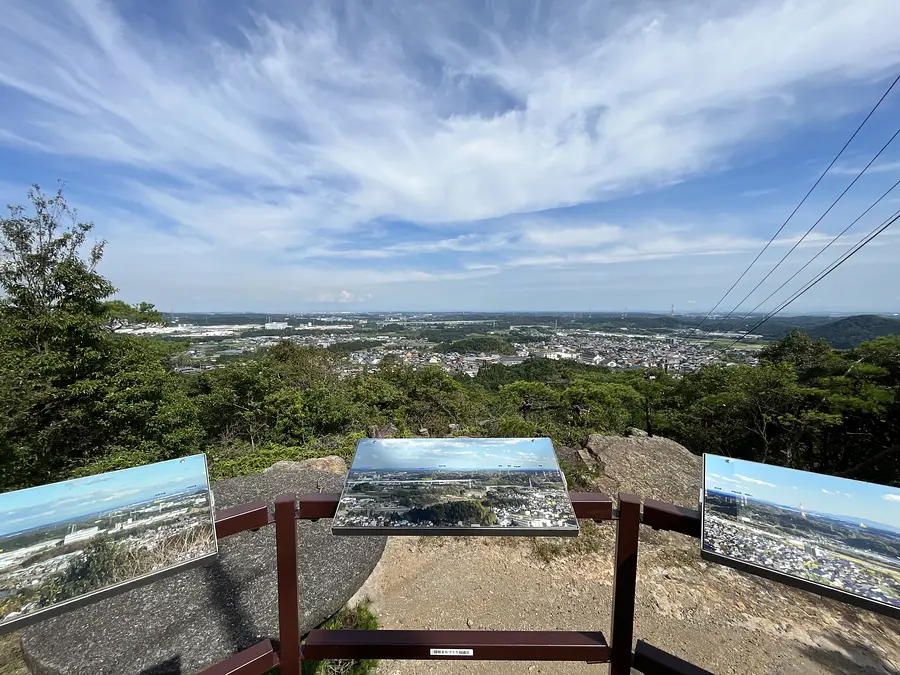
The view from Mt. Kannon. By the time you see this view at the end of your tour of the stone statues, you will be completely exhausted. If the weather is good, you can see the Ise Plain and Ise Bay, and in front you can see Chubu Centrair International Airport (Centrair), Kamishima, and Japan Marine's shipyard.
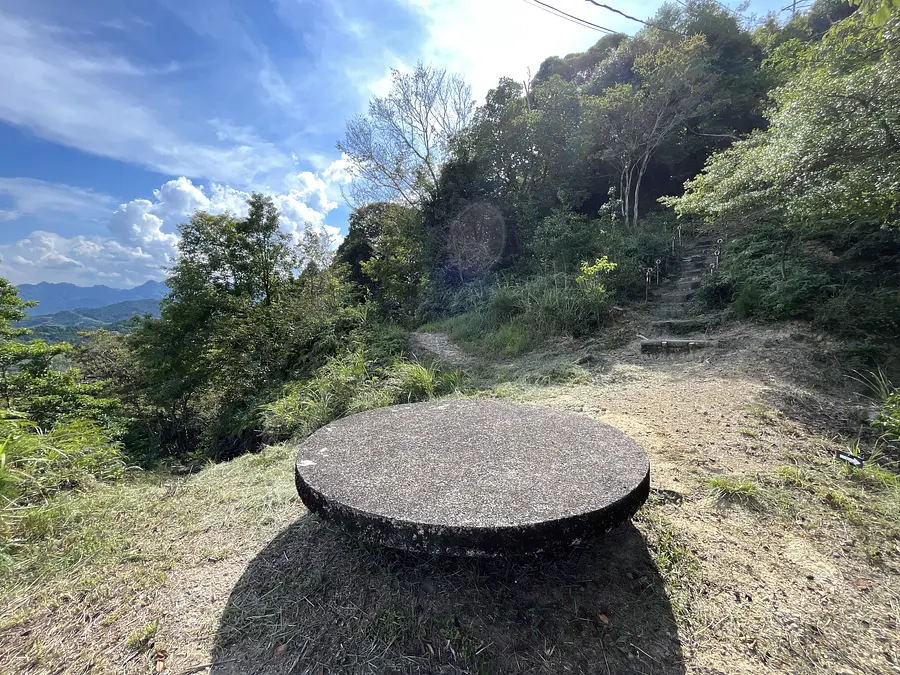
This is the observation deck (observation deck) at the lower elevation of the two locations.
Other highlights
Although we cannot introduce all of the grounds within the vast national park, we would like to introduce the main highlights.
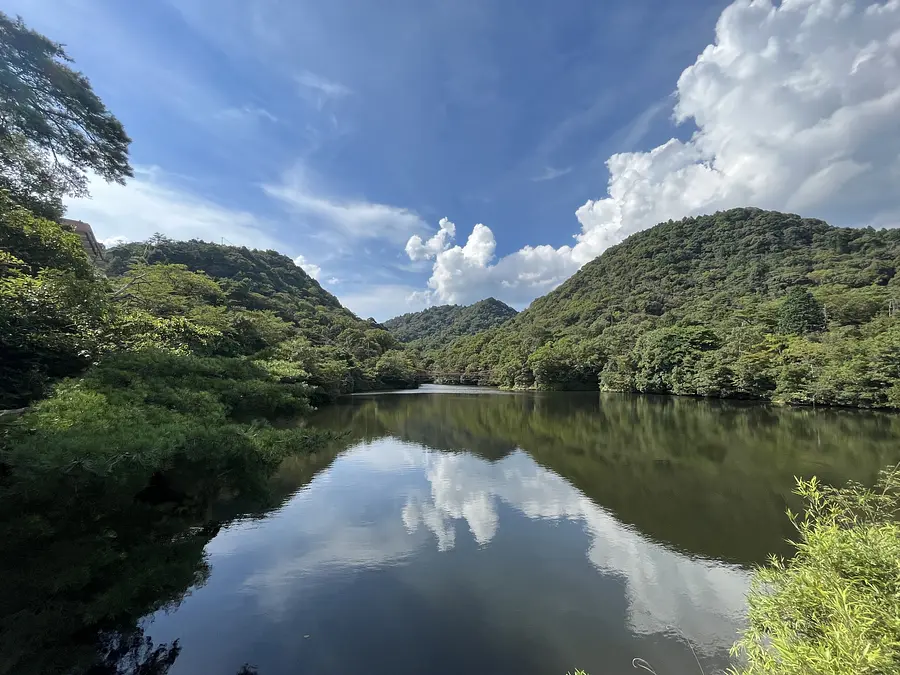
Shinike and Hijiri Bridge
The red bridge that can be seen behind the new pond is Hijiri Bridge.
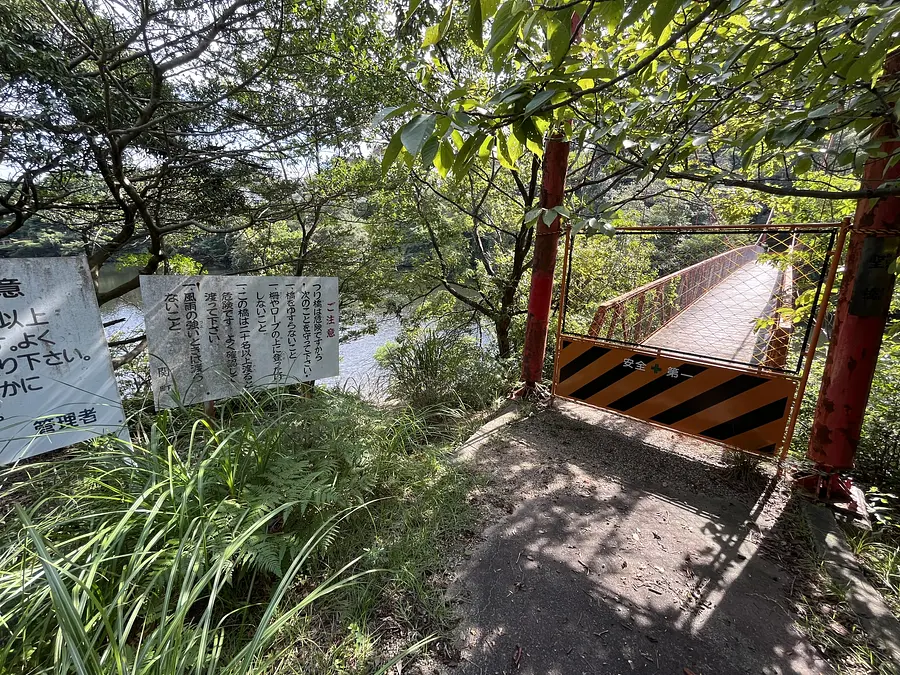
This is a red suspension bridge with a total length of about 40 meters spanning the new pond in Kannonyama Park. Unfortunately, it is currently closed to traffic.
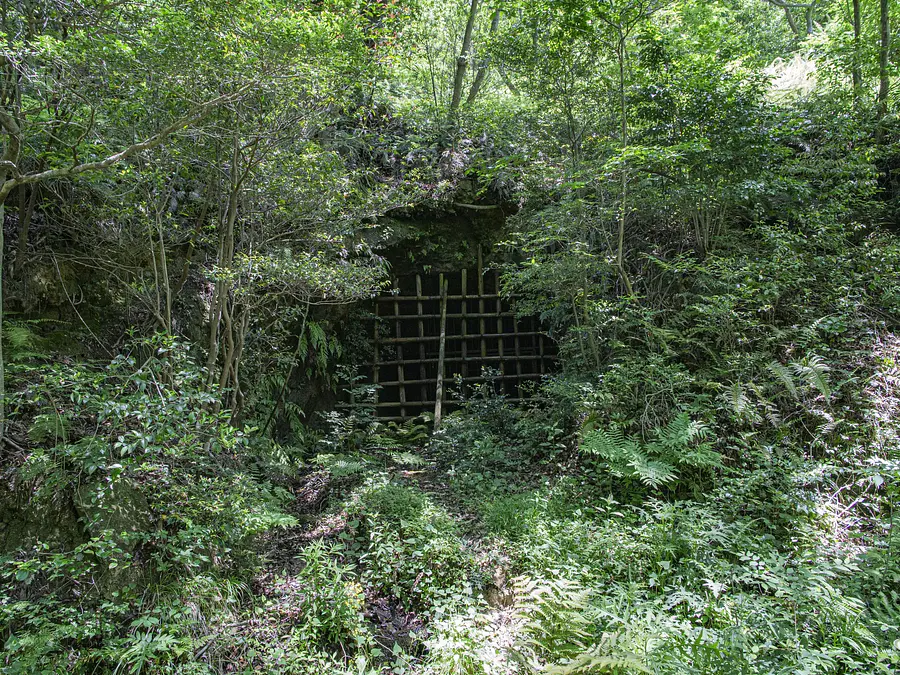
Suzuka Naval Arsenal Seki underground factory ruins
During World War II, there were 14 military factories across the country called ``Naval Yards'' that manufactured and repaired various parts and weapons for the Japanese Navy. One of them was in SuzukaCity, Mie Prefecture. At the end of the war, as air raids on SuzukaCity became more intense, factories in Suzuka were dispersed and evacuated, and one of the locations was here in Seki KameyamaCity. It is said that 14 tunnel factories were dug beneath Mt. Kannonji and 183 machine tools were installed. Many traces of those tunnels still remain. You can't go inside, but you can see what's going on from outside. It reminds us of the plight of munitions factories at the end of the war.
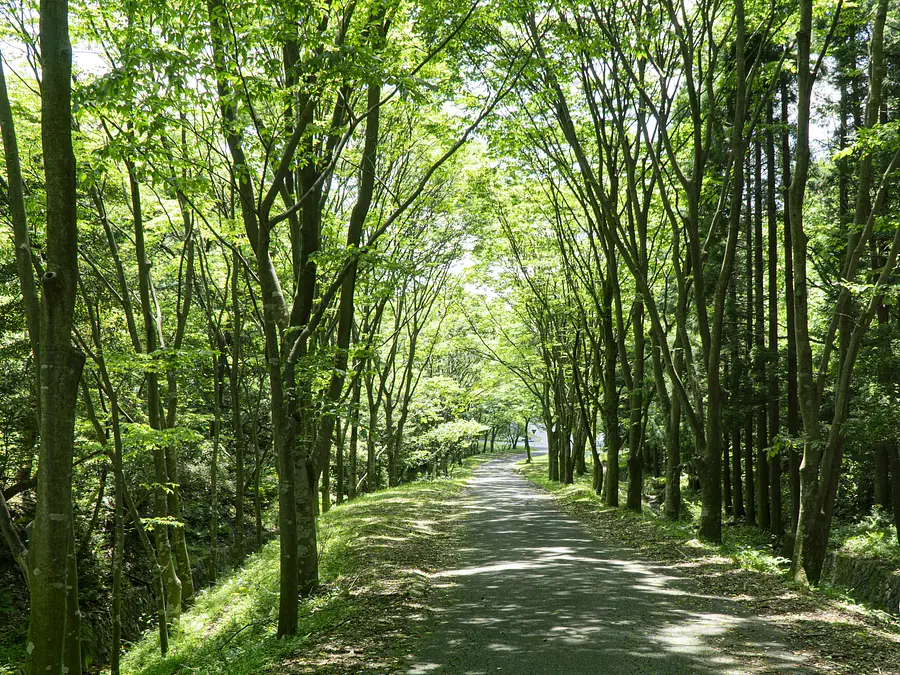
The sunlight filtering through the trees was pleasant as I took a walk in early summer along the forest roads surrounding the Suzuka Naval Arsenal Seki underground factory ruins.
Suzuka Seki Ruins
Suzuka-seki was a checkpoint during the Nara period, and was called the ``Sangen'' along with Fuwanoseki in Gifu and Arachinoseki in Fukui. is. ``Seki'' was an important facility for monitoring traffic, and is also the origin of the place's name. There is also a record that Suzuka Seki was closed during the Jinshin War in 672. Excavations have been underway since ancient tiles were discovered near the foot of Mt. Kannon in 2005. It is estimated that the Tsukiji wall extended from the foot of Mt. Kannon to the Suzuka River in a north-south direction.
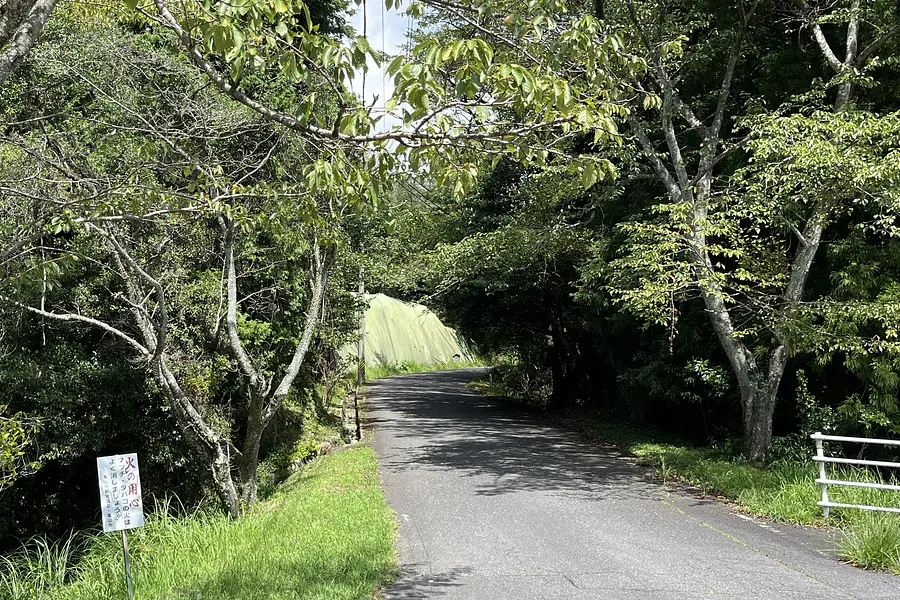
Unfortunately, the excavation site cannot be seen. (The top of the slope covered with a sheet is the excavation site, but entry is prohibited.)
Access to Kannonyama Park and parking lot
Enter from the entrance road along National Route 1. If you have been here in the past, you may have an image of the gate-shaped information signboard of Seki Lodge as the entrance, but now there is no information signage, so it may be a little difficult to understand. The parking lot around the tennis court is mainly used by tennis court users. For those using the park, the parking lot in front of SL is closer and more convenient. If you are going to visit the stone Buddhas, please also park in front of the SL.
How was it?
The park is located within Suzuka Quasi-National Park, so it is rich in nature and very spacious. Therefore, it is best to prepare your shoes, clothes, drinks, etc. before enjoying the event.
Inquiries regarding tourist information
KameyamaCity Tourism Association
TEL 0595-97-8877
Nearby spots
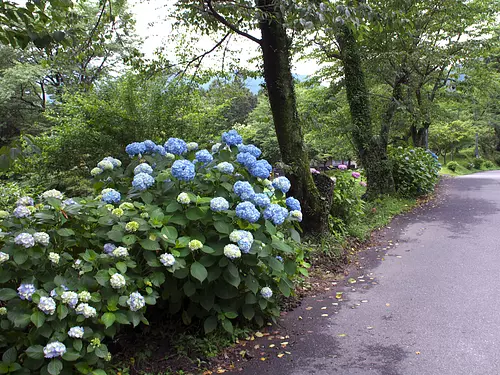
直線距離:262m
Kannonyama Park

直線距離:365m
Kannonyama Tennis Court
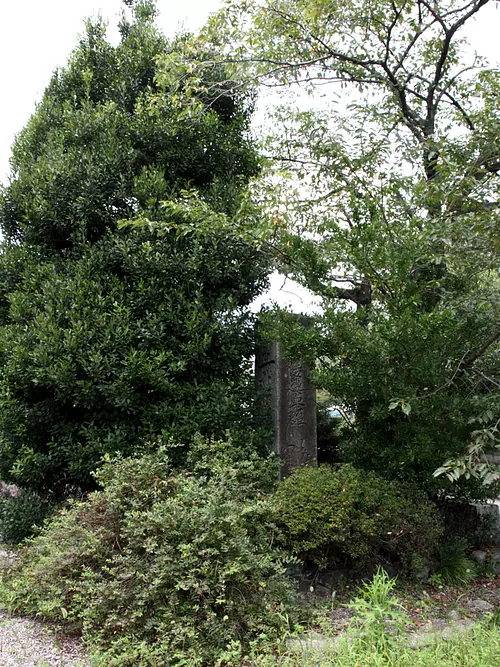
直線距離:400m
West Oiwake

直線距離:637m
Seki B&G Marine Center
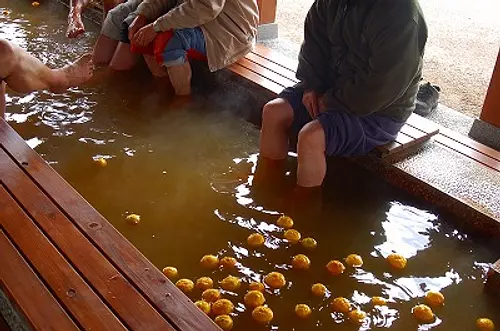
直線距離:810m
Koman no Yu (footbath)
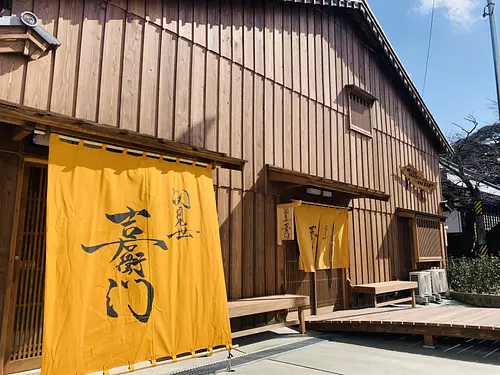
直線距離:843m
Sekimise Kichiemon
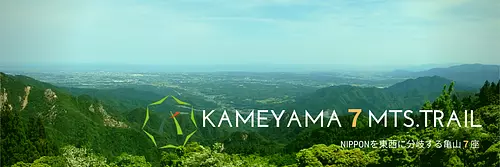
直線距離:845m
Kameyama 7za Trail
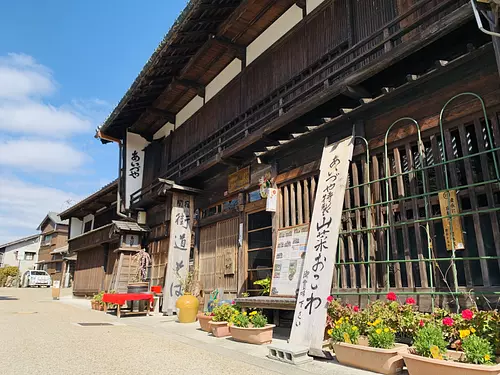
直線距離:860m
Aizuya
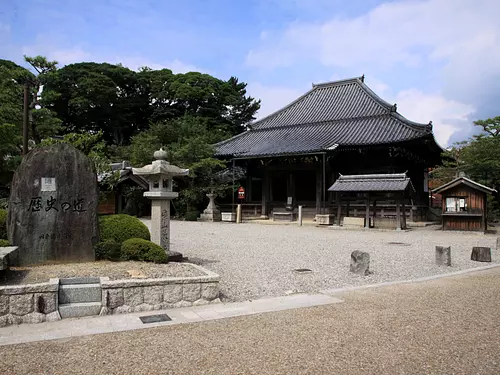
直線距離:875m
Seki Jizoin
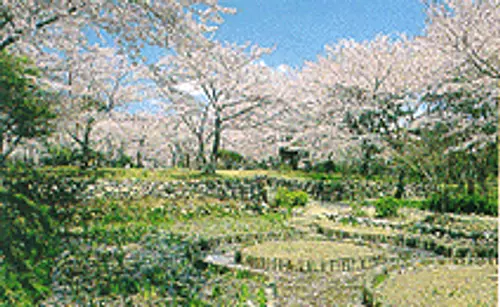
直線距離:1.0km
Shoboji mountain villa ruins
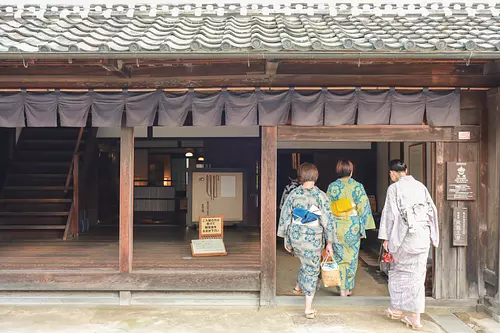
直線距離:1.0km
SekijukuHatagoTamayaHistoryMuseum
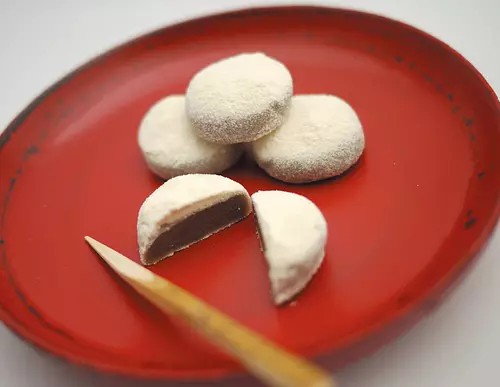
直線距離:1.1km
Fukagawa Sekinoto no To Honpo
nearby events
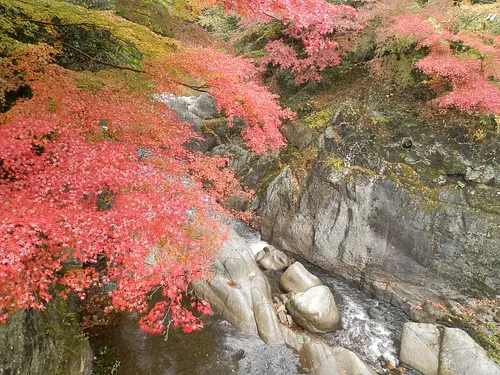
Date: Early November to early December From Tuesday, November 5, 2024...
直線距離:5.8km
Autumn leaves in Kawachi Valley
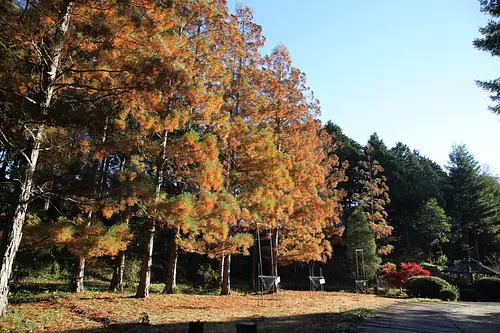
Date: Late October to mid-December
直線距離:9.6km
Autumn Satoyama RedHilForestofHisa

Date: Friday, November 1st to Saturday, November 30th, 2024
直線距離:10.1km
FFC Pavilion November event information

Date: Wednesday, January 1, 2025 *Meet at Reisanji Temple at 6am, participation is free
直線距離:12.0km
Sacred mountain first visit mountain climbing tournament
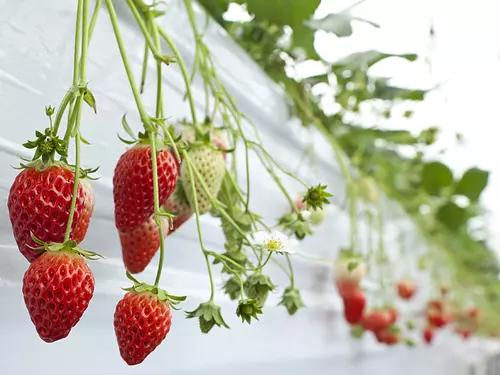
Date: Scheduled to open after mid-December 2024
直線距離:12.2km
Okada Strawberry Farm Strawberry picking
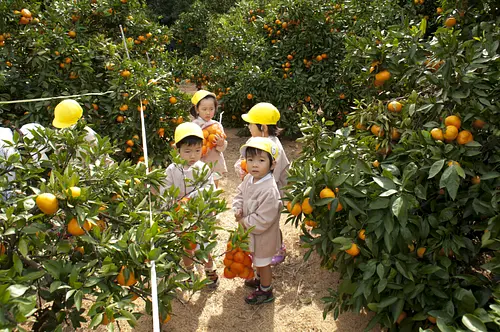
Date: Sunday, October 20, 2024 to Saturday, November 30, 2024
直線距離:12.8km
Tsu sightseeing orange picking garden
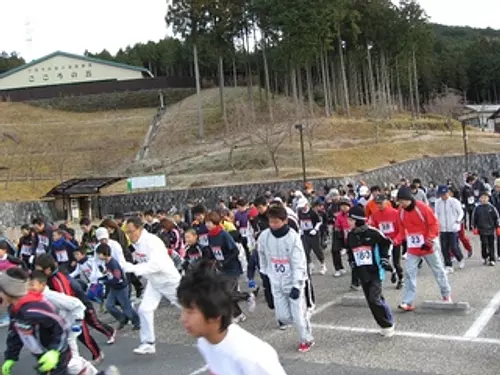
Date: Wednesday, January 1, 2025
直線距離:12.8km
Oyamada New Year's Day Marathon
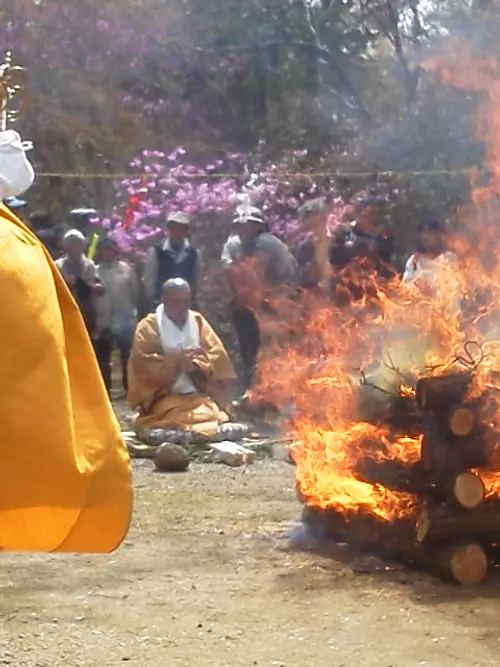
Date: April 7th and 8th every year
直線距離:12.9km
Fire walking (spring ceremony)
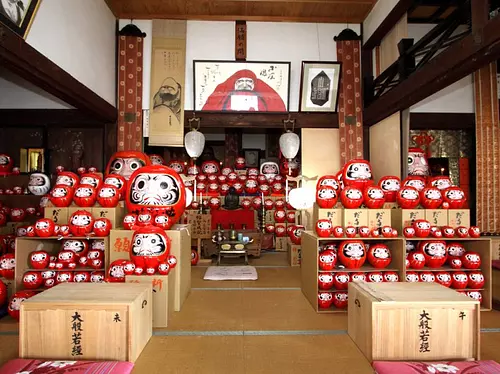
Date: February 11th every year
直線距離:13.0km
Prayer Daruma entrance prayer
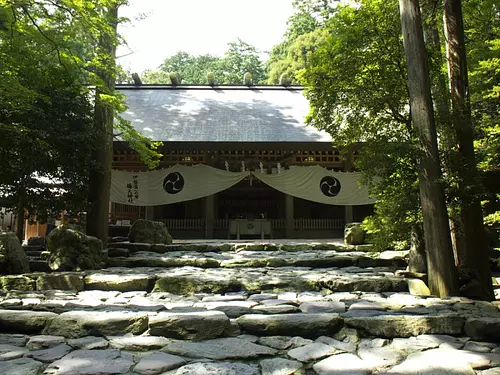
Date: Wednesday, January 1, 2025
直線距離:13.2km
[New Year's Visit] TsubakiGrandShrine Saidan Festival
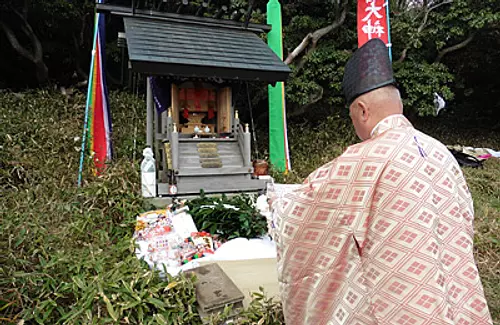
Dates: May 12th and November 12th every year
直線距離:13.2km
Nyudogakoku Okumiya Grand Festival

Date: Saturday, November 2, 2024 - Saturday, December 15, 2024...
直線距離:13.4km
[Dessert & Bread Buffet] Gorgeous cakes and fromages for a holy Christmas
Plays and experiences nearby
![Geino Tourism Strawberry Farm [Tourist Farm]](https://www.kankomie.or.jp/rails/active_storage/representations/proxy/eyJfcmFpbHMiOnsibWVzc2FnZSI6IkJBaHBBakFqIiwiZXhwIjpudWxsLCJwdXIiOiJibG9iX2lkIn19--f89afd1cec4d4e808fef7c11ddd441a363c21fec/eyJfcmFpbHMiOnsibWVzc2FnZSI6IkJBaDdCem9MWm05eWJXRjBPZ2wzWldKd09oSnlaWE5wZW1WZmRHOWZabWwwV3dkcEF2UUJNQT09IiwiZXhwIjpudWxsLCJwdXIiOiJ2YXJpYXRpb24ifX0=--8d6bc4b517fae43c9e30c66a38f93836dd92b535/607_1_org.jpg)
直線距離:8.3km
Geino Tourism Strawberry Farm [Tourist Farm]
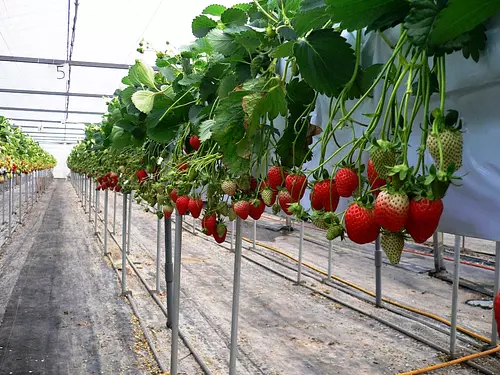
直線距離:8.7km
Kochiku Danshaku Strawberry Farm Strawberry picking
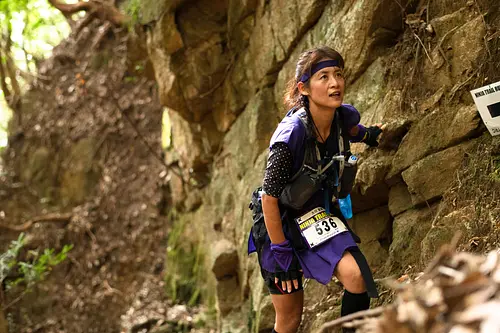
直線距離:12.8km
Ninja Trail Running Race 2024

直線距離:14.0km
Family camp (facility accommodation)
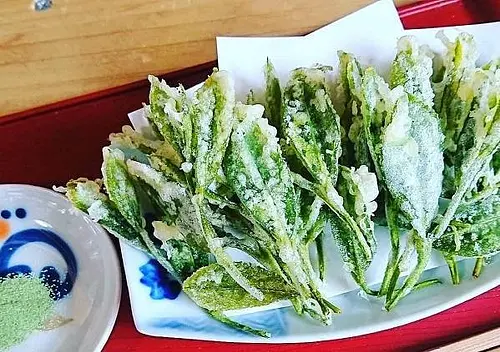
直線距離:15.8km
Hand-picking experience & sprout tempura 2024
![[Mie's Imma Coco Journey] Mountain Bike Beginner Tour](https://www.kankomie.or.jp/rails/active_storage/representations/proxy/eyJfcmFpbHMiOnsibWVzc2FnZSI6IkJBaHBBODVGQXc9PSIsImV4cCI6bnVsbCwicHVyIjoiYmxvYl9pZCJ9fQ==--16de877e4caab3320aa20a7fe1dffc1ca9ffee87/eyJfcmFpbHMiOnsibWVzc2FnZSI6IkJBaDdCem9MWm05eWJXRjBPZ2wzWldKd09oSnlaWE5wZW1WZmRHOWZabWwwV3dkcEF2UUJNQT09IiwiZXhwIjpudWxsLCJwdXIiOiJ2YXJpYXRpb24ifX0=--8d6bc4b517fae43c9e30c66a38f93836dd92b535/WARAK.png)
直線距離:17.1km
[Mie's Imma Coco Journey] Mountain Bike Beginner Tour
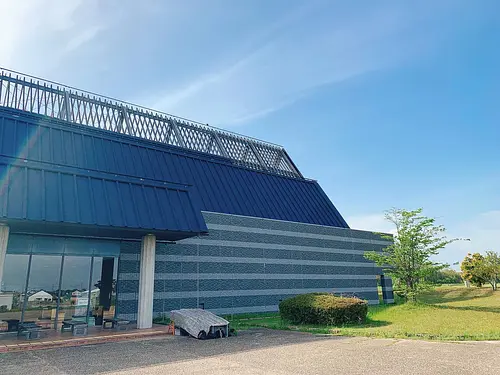
直線距離:17.2km
Summer Vacation Children's Experience Museum 2024
![[Interacting experience for adults] Seaside horse farm experience 2 DAYS](https://www.kankomie.or.jp/rails/active_storage/representations/proxy/eyJfcmFpbHMiOnsibWVzc2FnZSI6IkJBaHBBN2dpQXc9PSIsImV4cCI6bnVsbCwicHVyIjoiYmxvYl9pZCJ9fQ==--0a2187006fe9f947b0e03d7dffddfde1deeb02d1/eyJfcmFpbHMiOnsibWVzc2FnZSI6IkJBaDdCem9MWm05eWJXRjBPZ2wzWldKd09oSnlaWE5wZW1WZmRHOWZabWwwV3dkcEF2UUJNQT09IiwiZXhwIjpudWxsLCJwdXIiOiJ2YXJpYXRpb24ifX0=--8d6bc4b517fae43c9e30c66a38f93836dd92b535/line_oa_chat_230510_143513.jpg)
直線距離:17.6km
[Interacting experience for adults] Seaside horse farm experience 2 DAYS
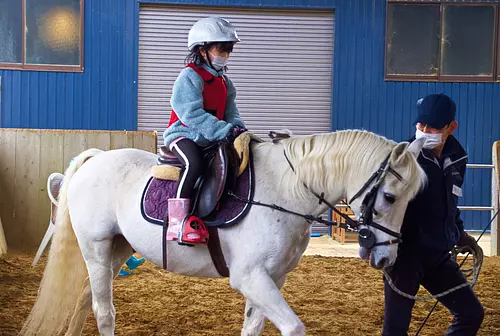
直線距離:17.6km
Pony ride & stable tour
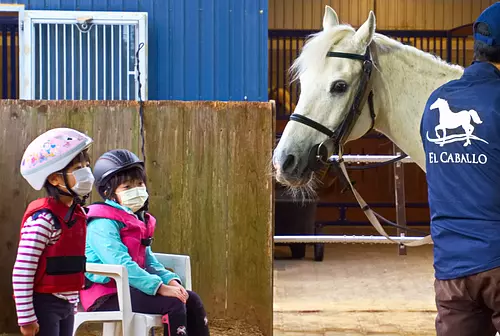
直線距離:17.6km
Pony 1DAY camp

直線距離:17.6km
``Parent and child'' pony 1-day camp
![[Horseback riding experience while looking at the sea] Pony ride event](https://www.kankomie.or.jp/rails/active_storage/representations/proxy/eyJfcmFpbHMiOnsibWVzc2FnZSI6IkJBaHBBaWdyIiwiZXhwIjpudWxsLCJwdXIiOiJibG9iX2lkIn19--ae11694160ff6f92aac37a76f5361a1ad50e4e9f/eyJfcmFpbHMiOnsibWVzc2FnZSI6IkJBaDdCem9MWm05eWJXRjBPZ2wzWldKd09oSnlaWE5wZW1WZmRHOWZabWwwV3dkcEF2UUJNQT09IiwiZXhwIjpudWxsLCJwdXIiOiJ2YXJpYXRpb24ifX0=--8d6bc4b517fae43c9e30c66a38f93836dd92b535/2410_1_org.jpg)
直線距離:17.6km
[Horseback riding experience while looking at the sea] Pony ride event

